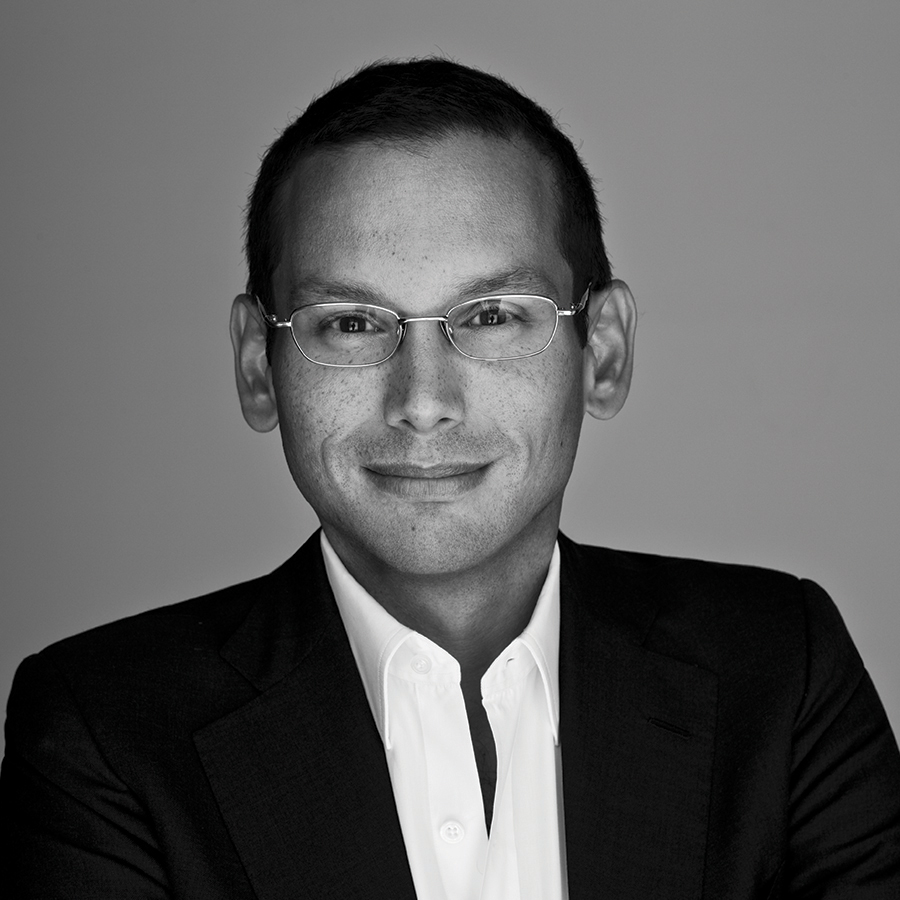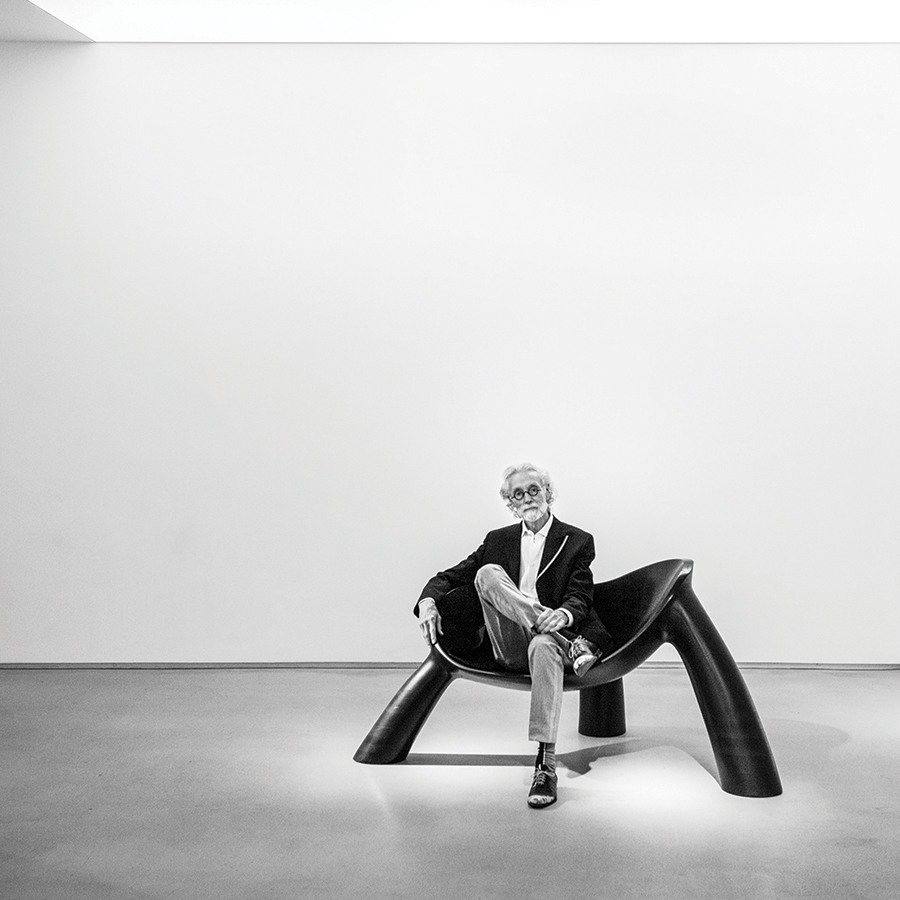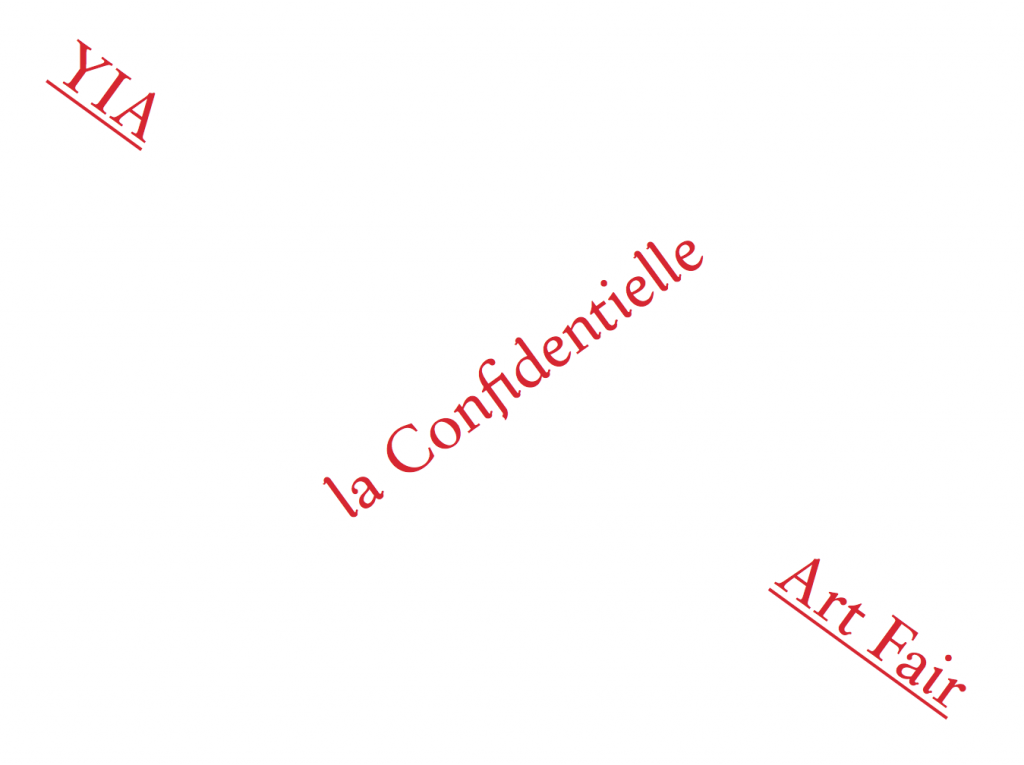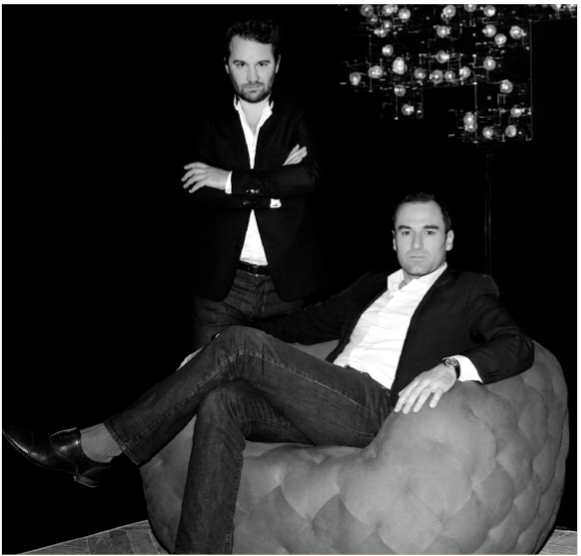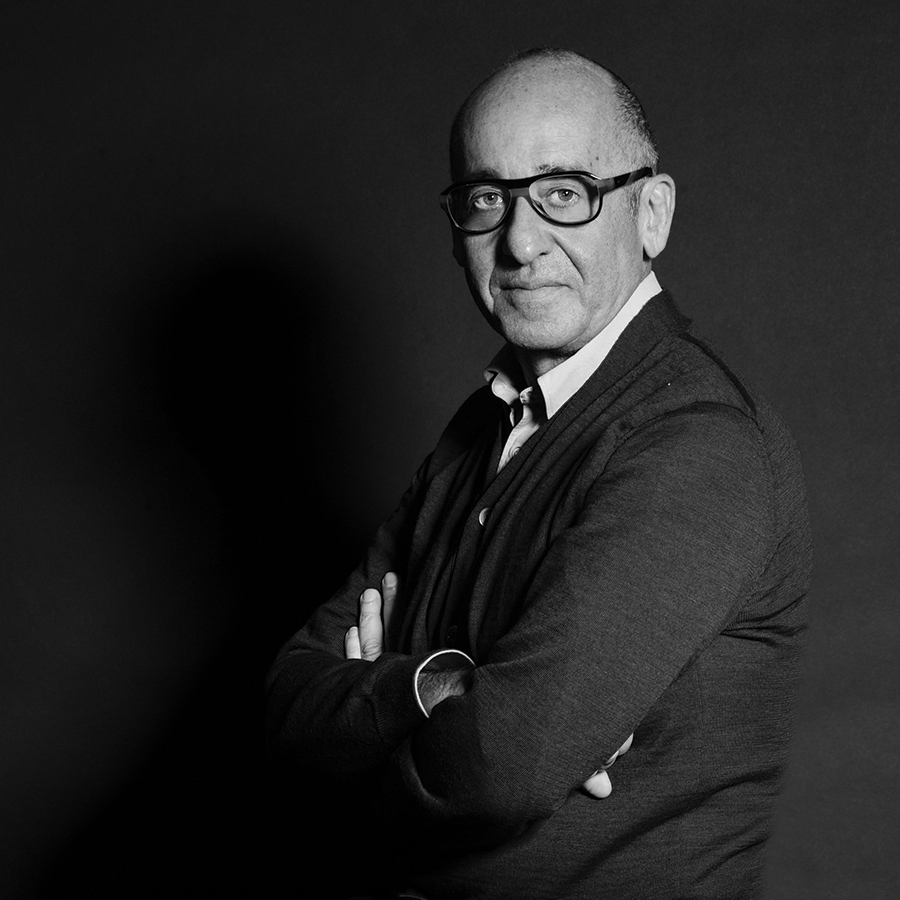
DIDIER KRZENTOWSKY ON COLLECTING
By Crash redaction
DIDIER KRZENTOWSKY INTERVIEW ON COLLECTING: FOLLOWING A CAREER IN THE SPORTS INDUSTRY, CONTEMPORARY ART AND DESIGN COLLECTOR DIDIER KRZENTOWSKY CREATED THE KREO AGENCY AND GALLERY WITH HIS WIFE CLEMENCE IN THE 1990S. WE MET WITH HIM TO TAKE A LOOK BACK AT AN UNCOMMON CAREER FUELED BY A PASSION FOR CONTEMPORARY CREATION.
Interview by Frédéric Fournier
Picture above: Didier Krzentowsky, photo by Frank Perrin @Studio Visconti
Everyone knows about your tireless enthusiasm. But what kind of collector are you?
It all started when I was still very small, maybe 5 or 6 years old. At that time I was collecting the advertising cards you could find in pharmacies. After that I collected key chains, Japanese watches (Seiko, Citizen), and even Rolexes from the 50s and 60s, which no one cared about at the time! Then I moved on to contemporary art in the 80s – by buying a watch of all things! I was at Galerie 1900-2000, where they had a watch rack between all the photos and paintings they were selling. And that’s how I got my start!
So we can say you are somewhat addicted to collecting?
Meeting other collectors has certainly shown me that this can escalate very quickly into a case of neurotic obsession!
Do you remember the first work you purchased?
No, I can’t remember. But I do know that when I started my collection, I was mainly interested in photographs, because, at the time, painting had become photography! So I quickly started to focus on two things: I loved design and architecture, and I was also drawn to artists who did portraits. So of course I started collecting the Bechers and their children, then photos of Cindy Sherman, Nan Goldin… I even bought Nan Goldin’s entire first exhibition at Agnès B in the late 80s, and I did the same with Gilles Dusein at Galerie Urbi et Orbi. I also purchased a few Bill Owens from Colin De Land at the American Fine Arts Gallery in New York.
Did collecting contemporary art inspire you to open a design gallery that looked more like an art gallery than any other design gallery of the time?
It mostly came about by chance, but I think luck and chance can go hand in hand! At the time, I was working in the family company, even though I was more focused on my collections than on my job. One day we sold the business and I didn’t really know what to do with myself. Since I had a little money, I first thought about opening an art gallery with Elein Fleiss – that was before she created Purple Prose – but what we liked didn’t interest anyone else! So it didn’t end up happening. In the end, my wife Clémence and I created the Kréo design agency in 1993. The idea was to pair designers up with industrial companies to help organize the product development process.
Right! You opened the Kréo agency before the gallery. What inspired you to open an agency?
In every field, executives and big businessmen always have advisors. But in design, the people who choose products are mostly from marketing and have absolutely no background in design. That’s why they turn to these massive ad agencies who always try to sell the same things. Clémence and I worked on the organization committee for the 1992 Olympic Games in Albertville. At the time, we were very close with Mark McCormack, one of the premier sports agents in the world.
But for us, the kicker was when we asked ourselves one question: why not take Mark’s business model and become agents for designers?
So we started contacting manufacturers, asking them to bring in designers to work on their products so they could get a different perspective on design and graphics. We put together some really great items that way, notably the first line of urban furniture for Decaux, the Perrier glass, all the Ricard bar and café products… on the whole, however, the idea has never really worked very well. But I’m convinced it’s a good idea and that it will work one day.
So the gallery idea came afterwards?
Actually, since I was collecting art and design from the 60s and 70s, I of course became a regular around Rue Louise Weiss in the 13th district of Paris, which was an emerging neighborhood for galleries in 1997. Then, in 1999, while I was at an opening, Jennifer Flay and Emmanuel Perrotin, who each owned galleries on the street, showed me a little place next door and asked me: “Why don’t you open a gallery?” And I made my decision right there. I mean, I literally opened my gallery in 3 minutes! And for my first exhibition, I displayed the centerpieces of my furniture and light collection: Gino Sarfatti and Verner Panton lamps and Joe Colombo furniture.
Was the gallery successful right away?
When we opened the gallery, we were the first to exhibit furniture in a contemporary art gallery. Before that, art collectors never even thought about furniture. It’s even kind of funny today, when you look back at the catalog for the “Passions Privées” exhibition, which took place in 1995 at the Musée d’Art Moderne de la ville de Paris, to see how collectors really paid no attention to furniture at all. So we started to sell furniture at the gallery, but at first I had to discount everything just to sell it. It actually ended up becoming a sort of game, which I really enjoyed! So then I turned to the idea of creating a design laboratory. We contacted designers like Ron Arad, Marc Newson, Martin Szekely, and the Bouroullec brothers and asked them to create original designs in limited editions of 8 plus 4 artist proofs, just like you do with bronze sculptures. Almost immediately, some of the biggest contemporary art collectors were interested in the collections. It all came together pretty quickly, especially with Marc Newson, who soon became a star in design. Some of his items have even fetched the kind of prices that only major contemporary artists see. Then more designers came after that…
Do you think design and contemporary art are on the same level?
I’ve changed my ideas about design since I first started out. For me, design was synonymous with use. So it was out of the question for me to exhibit anything design on a pedestal. But, when you are in a gallery or museum, you are not at home, so the items are not in the kind of environment where you would use them.
In an art gallery, pedestals are there to showcase items, so why not use them for design?
Everyone knows that design, like graphic art and fashion, is an applied art. But for me, applied artists are artists just the same: applied does not mean less creative. So, of course, design and art on the same level for me. Same with literature, music, or any art. The only difference is that when designers sit down to work, they have to consider how an item may be used and think about the kind of industrial development it will need.
But doesn’t the « design laboratory » idea you developed help designers break away from the constraints imposed by industrializing a product?
Definitely. At the same time, we are thrilled when items produced for the gallery are later mass produced, like Flos producing a plastic version of Bouroullec’s “Liane” ivy lights. And Flos never would have done them at all had the project not started out at the gallery.
So, just like an art gallery, you offer your designers the creative freedom and open deadlines they need to explore new realms of possibility?
Our eyes have to adjust to any kind of new creation or design. Today, what company can afford to wait 4 or 5 years for consumer eyes to adjust to anything new! And that’s exactly why the financial market for art and design is now only selling what’s familiar. It’s a lot easier and makes everyone a lot more comfortable!
It’s true that the kind of design offered by industrial companies has lately shown a huge 50s, 60s, and 70s influence…
For the past twenty or thirty years, we have definitely been living with a sort of remix logic. In terms of technology, we are constantly making advances, but in terms of design, we remix everything. When I give conferences on design, I always start by showing Dieter Rams’ Braun products alongside Apple’s products today. And you don’t have to be a connoisseur: the comparison says it all!
When displaying the Marcel Brient collection at the Kréo gallery, the challenge was to exhibit design, contemporary art, and manuscripts all together…
That exhibit is like a multifaceted portrait of a collector who has combined design, art, and writing for more than 15 years, at least on an intellectual level. It was also a way for me to show that anything is possible in terms of shows and what you exhibit. I’m open to everything and I don’t want to follow just one path. Everyone is kind of stuck in their ways lately: it makes me want to find even more ideas and go off in even newer directions…
So it was this same desire to find new directions that led you to sell your entire photo collection in 2005?
Yep, it’s the exact same idea.
After spending so much time putting together a collection, is it really so easy to wipe the slate clean and start over from scratch?
It’s incredibly easy. For me, a collection is nothing more than a puzzle. And it can be really frustrating when the puzzle is almost complete and you are just looking for the last pieces to finish it off. Or sometimes you really like a certain artist or artwork, but it doesn’t fit in your puzzle. So you have to just not be afraid to start a new one. And selling my photo collection also gave me the money I needed to buy new things and start a new puzzle. But, again, for me, starting a new collection also means finding the energy to follow new desires, new stories, and new experiences.
So you started all over with absolutely nothing?
At least for now, I’m keeping my lamp collection, especially Gino Sarfatti’s lamps. The collection is still missing a lot of pieces, so I’m happy! In art, however, I started over from scratch, taking time to learn about artists who didn’t fit into my last puzzle, though I was interested in their work, like Robert Filliou, Haim Steinbach, Ugo Rondinone…
Do you know what direction you want to take? Any basic ideas?
No, I have no idea where I want to go with this… and that’s exactly what I like about it!
What was the last piece you purchased for your contemporary art collection?
I bought a piece by Latifa Echakhch. It’s a sort of lithography stone, but also like a painting. It means a lot to me because my parents had lithography stones at home, and I’m really interested in writing. It took me somewhere else, and that’s what’s most important for me.
Do you feel any sort of obligation to support the French art scene?
No, I don’t care about those things. But I do like a lot of French artists, like Claude Lévèque, Bertrand Lavier, and Philippe Parreno, whom I have collected for quite some time now. I even recently purchased a Christmas Tree by Philippe Parreno.
How do you explain the imbalance between the lack of appreciation for French artists on the international market and the high esteem reserved for French designers?
It’s true: we have quite a few French designers who are recognized around the world. And the reason is history: all the major design galleries have always been French, from the 18th century right up to today. When I opened my gallery, I benefited enormously from the stellar reputation of French furniture all around the world. The contemporary art market is a different story. First of all, because there are only a few French galleries that have an international presence. And secondly, because art today depends heavily on the financial market : it may even be that an artwork’s financial value is more important than its artistic value! But it’s true: since the 50s, no French artists have had any financial success on the global market. Though some of them have deserved it!
Interview from Crash #62






